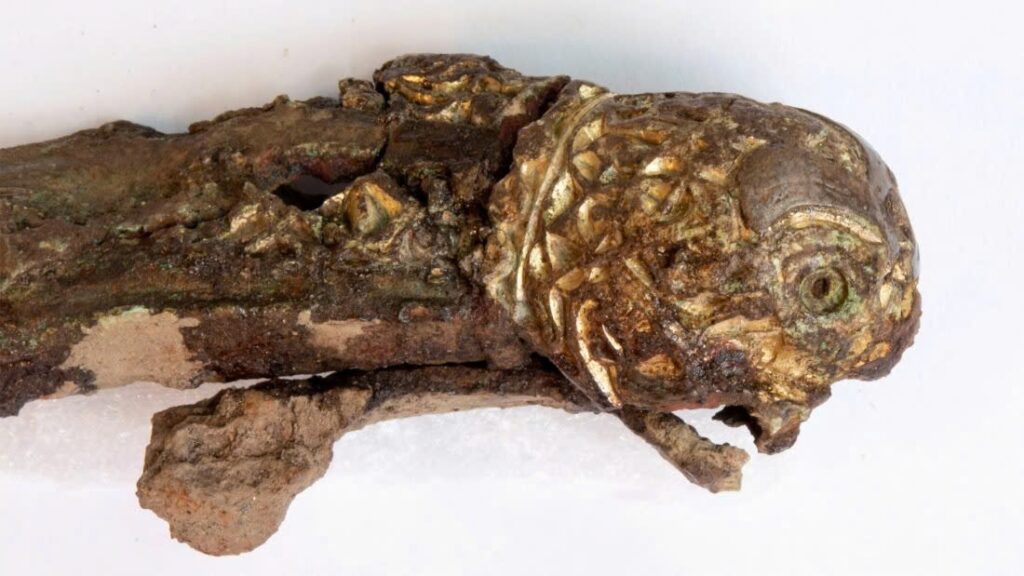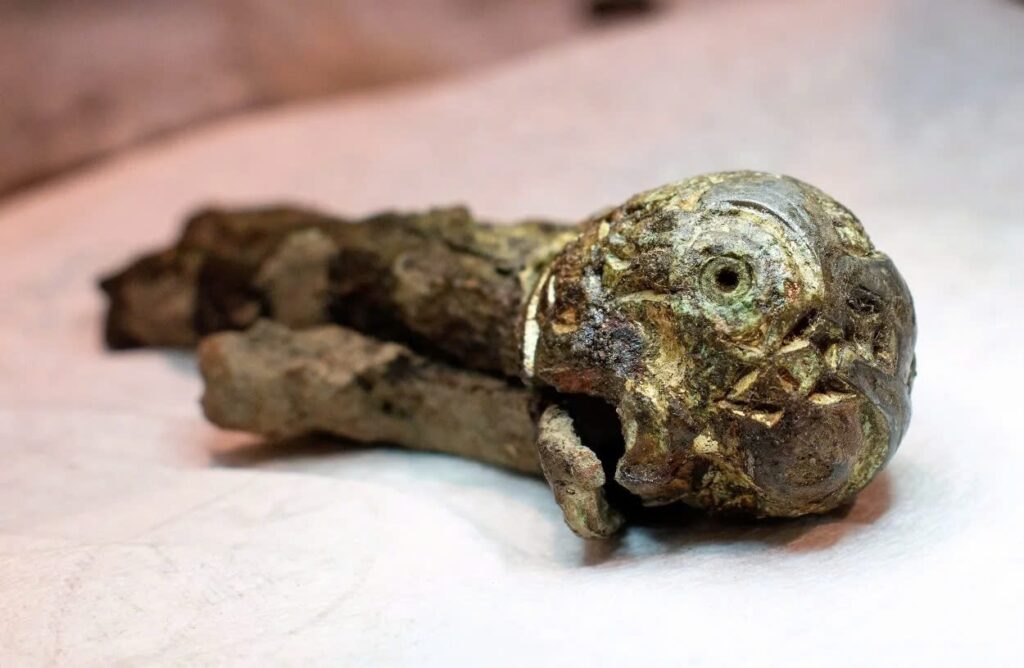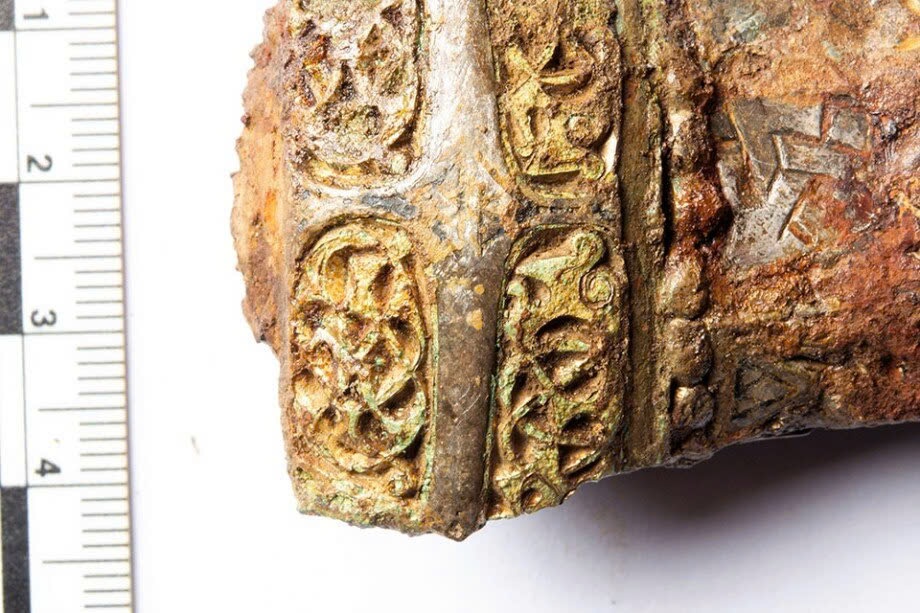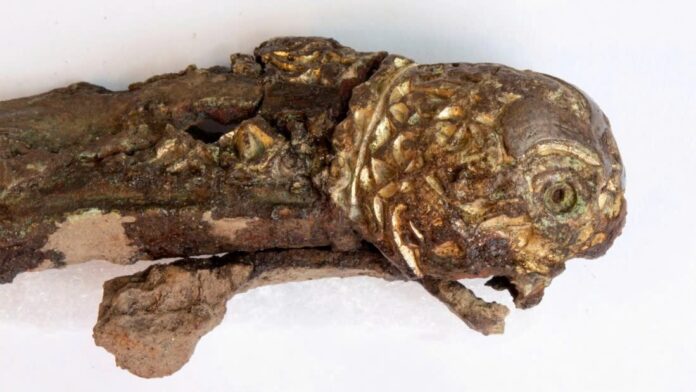Unveiling a Unique Piece of Viking History

In the quiet fields of Gausel, Stavanger, on Norway’s western coast, a remarkable story of archaeological discovery has unfolded. What began as two separate finds by metal detector enthusiasts has culminated in the unearthing of one of the most ornate and heaviest sword types from the Viking Age.
A Serendipitous Discovery
The tale began last year when a small, irregular piece of metal was found on a farm in Gausel. Unaware of its significance, the finder donated it to the Stavanger Archaeological Museum. Little did they know that this seemingly insignificant fragment would soon be part of a much larger story.

A year later, in a twist of fate, a friend of the original finder returned to the same field. This time, they unearthed a large section of an intricately decorated sword hilt. When brought to the museum, conservators made an astounding realization – the two pieces were a perfect match, parts of the same ancient weapon.
The Magnificent D-Sword
This sword belongs to an elite category known as the D-sword, renowned for its ornate design and substantial weight. Despite the discovery of over 3,000 Viking swords, only 20 D-swords have been found in Norway, making this find exceptionally rare.
A Window into Viking Craftsmanship
Exquisite Ornamentation

The hilt’s decoration is a testament to the skill of Viking-era artisans. It features gilded elements depicting animal styles typical of the Iron and Viking Ages, alongside geometric motifs in silver created using the niello technique. The crossguard ends are shaped like animal heads, adding to its unique character.
International Connections
The sword’s ornamentation suggests it may have originated in the Frankish Empire or England. Its closest known parallel is a sword found on the Scottish island of Eigg, dating back to the 9th century.

Preserving Viking Legacy
As archaeologist Zanette Glørstad from the University of Stavanger’s Museum of Archaeology notes, “The technique is of very high quality, and both the lavish and complicated decor and the special formation of the crossguard make this a truly unique find.”

The sword hilt is currently undergoing careful cleaning and conservation. Soon, it will take its rightful place on permanent display at the museum, offering visitors a glimpse into the rich tapestry of Viking history and craftsmanship.

